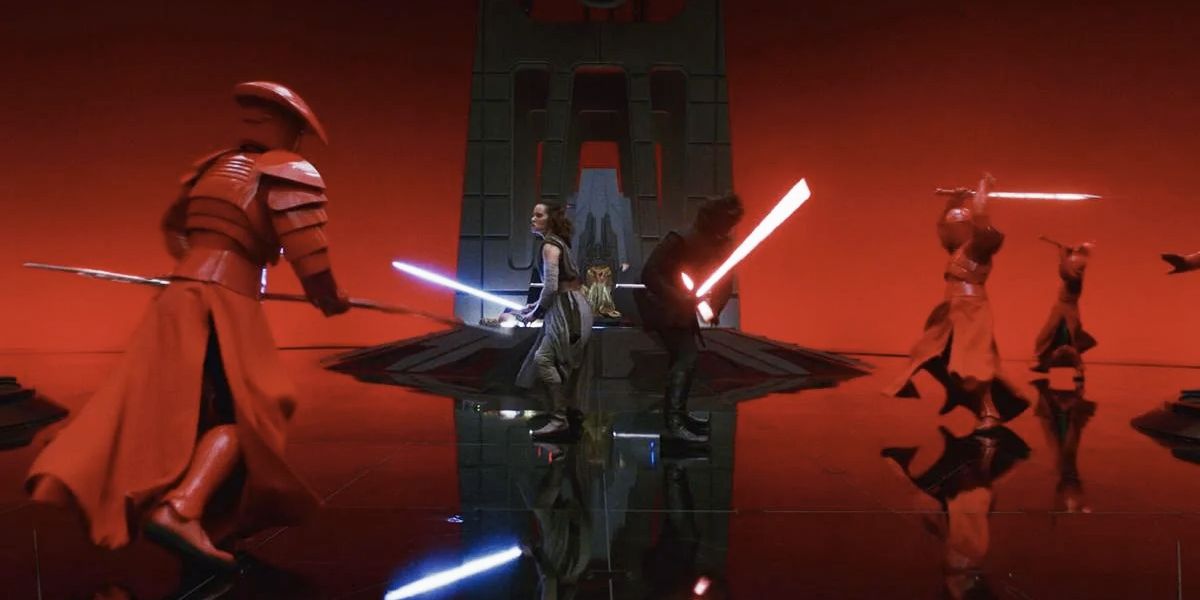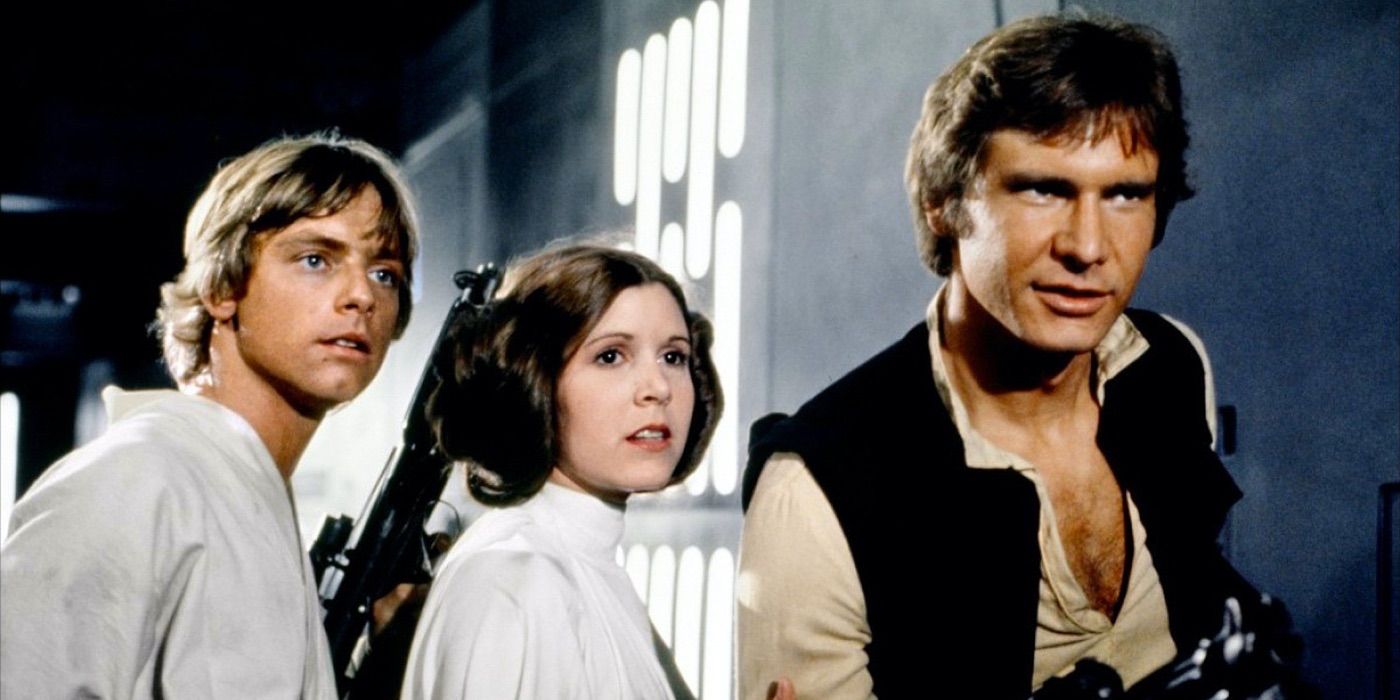The Star Wars saga is the most iconic film franchise of all time. Everyone knows what Star Wars is. It’s pervaded our public consciousness for nearly 40 years now — you have to try really hard not to be aware of this franchise, whose humble beginnings lie in a young filmmaker trying to make a Flash Gordon ripoff. Little did George Lucas know that with the original Star Wars, he was jumpstarting not only a widely beloved feature film franchise, but also originating an entire universe that folks would pore over, debate, and expand upon for years to come.
While Lucas intended Star Wars to be three separate trilogies, he decided to sell off his stories and hand over the reigns to someone else to bring the final three episodes — VII, VIII, and IX — to fruition. The team behind Star Wars: The Force Awakens eventually opted to craft their own trilogy and leave much of Lucas’ original plan behind, but the spirit of Star Wars lives on, and the now Disney-owned Lucasfilm has plans to continue the Star Wars saga for many more years to come.
So with the new trilogy complete and additional Star Wars movies coming in the near future, I've put together my own personal ranking of each installment. As with any and all lists, this is subjective, but I've done my best to make my case for each position. So read on below as I rank every Star Wars movie thus far.
12. Star Wars: The Clone Wars
The Star Wars: The Clone Wars film is arguably the strangest theatrically released Star Wars project so far, acting as a pilot episode for the vastly superior Clone Wars TV series. In Star Wars' only animated feature, Anakin Skywalker (voiced by Matt Lanter) and his new Padawan apprentice Ahsoka Tano (Ashley Eckstein) have to bring Jabba the Hutt's constantly farting son back to him. It's a wonder The Clone Wars was so popular considering how odd and charmless this oddity is. And no, The Clone Wars didn't have the major negative impact on the entire franchise that the next entry does, but the complete mundanity of this exercise is somehow even worse. There's zero weight to the actions of these characters, and this feels more like a diversion for these characters than a story that serves any major purpose. At this point, however, The Clone Wars is arguably most interesting because it was directed by Dave Filoni, which means it's possible even more of these characters will make it to the Disney+ Star Wars TV universe. Let's just keep the farts in the past though, shall we?
11. Episode IX: The Rise of Skywalker
It’s almost impressive how aggressively uninteresting Star Wars: The Rise of Skywalker is. The storytelling is muddled to the point of incomprehension, and the characters make decisions motivated by nothing more than attempting to move the plot along or set up/open another mystery box tied to mythology that ultimately doesn’t really matter. What should have been an emotionally charged battle for Kylo Ren’s soul becomes a treasure hunt that gets bogged down in answers to lore-driven questions that didn’t need answering, and the “truth” of Rey’s parents sidetracks this trilogy’s hero for almost the entirety of the film as she continuously says “peace out” to her loyal companions in favor of risking her life (and theirs) to chase… something? Does it even matter what? And alongside her, Kylo Ren’s redemption arc gets shortchanged in the most frustrating of fashions as he keeps chasing Rey for… other reasons?
The root of the movie’s problems as it relates to Rey and Kylo Ren is Palpatine. By bringing the Big Bad from the original trilogy back to life, he sucks so much exposition and story out of what, again, should have been a finale focused on a mission to save Kylo Ren from himself. Even beyond that, Finn doesn’t get a story arc beyond saying “Where’s Rey?’ over and over again, and Poe’s character development from The Last Jedi vanishes in favor of — you guessed it — more fly-by-the-seat-of-your-pants rogue nonsense.
The piss-poor story and pacing removes all emotional attachment to these characters, and the film’s loose definition of the word “death” renders all stakes meaningless. If Palpatine was brought back from the dead once, who’s to say he won’t be again? Why even try killing him again? And if we know Kylo’s not going to kill Rey, what reason is there to be excited when they’re bashing their lightsabers against one another?
But beyond a bad story and non-existent character arcs, Rise of Skywalker is also a drag from a cinematic standpoint. The visual language of the movie is perplexing and small-minded (the first half-hour or so is confusing as hell), and the starship battles lack clear geography and propulsion. By the final act of the entire Skywalker Saga — a moment that should be fraught with tension — you’re just kind of sitting there mindlessly following along, with any care or passion or interest drowned out by the baffling decisions made during the previous two hours.
In attempting to make a film that caters to all Star Wars fans and ties up the loose ends in all the Skywalker Saga movies, J.J. Abrams shortchanges the very characters he so successfully crafted and introduced in The Force Awakens. That’s its biggest sin. Rey, Kylo, Poe, Finn, and yes Rose Tico deserved better than this half-baked, fan service overload. What a colossal disappointment.
10. Episode I - The Phantom Menace
Anticipation was at a fever pitch for The Phantom Menace when it came out. And why wouldn’t it be? This was the origin story of Darth Vader; the tragic villain of the original trilogy; Luke Skywalker’s dad. How, why, and when did Anakin Skywalker turn to the dark side? The possibilities were endless! And yet, for a film whose premise has so much potential, The Phantom Menace is wholly lacking any sense of momentum.
Perhaps the writing was on the wall during the opening crawl, in which we’re brought up to speed on the thrilling drama behind…trade negotiations. Even the opening sequence with Qui-Gon Jinn and a young Obi-Wan Kenobi is devoid of any excitement or tension. The lines are delivered entirely flat, there’s no sense of danger, no sense of intrigue. Things just happen on a screen, one after another, as plainly as possible until the credits roll. That’s The Phantom Menace in a nutshell.
The film’s one saving grace is the podrace sequence, which in hindsight I remembered making up for a lot of the film’s shortcomings. Upon a rewatch, even though the podrace scene is indeed wonderfully crafted, the film’s brutal flaws far outweigh the small amount of goodwill it conjures. Indeed, with one movie George Lucas tainted his iconic franchise forever, and while folks may argue disdain for Phantom Menace is misplaced, it really, truly is that bad.
9. Episode II - Attack of the Clones
While Lucas had the prequel trilogy mapped out from the beginning, he found himself struggling with the screenplay for Attack of the Clones given the harsh reaction to The Phantom Menace. As a result, the sequel leans more heavily into set pieces and lightsaber battles, which at least provide some dynamism to an otherwise sluggish, way overlong middle chapter that introduces us to Emo Anakin Skywalker.
Watching Lucas attempt an honest-to-goodness love story with Hayden Christensen and Natalie Portman is straight-up painful. The two actors have zero chemistry, and Christensen struggles to toe the line between playing a romantic lead and convincingly showing shades of the darkness within Anakin that would fully take over in the next film. The result is the worst performance of the prequels, and that’s saying something. Christensen’s delivery is wooden, unnatural, and strained. It doesn’t help that he was given little direction as to how, exactly, to pitch this performance, but more often than not Anakin comes off as a whiny, petulant kid who you just want to go away forever.
Obi-Wan’s side story involving the clones is at least mildly compelling, and indeed what makes Attack of the Clones a better movie than The Phantom Menace isn’t more set pieces; it’s offering up a plot that doesn’t bore the audience to tears. Visually the film is a step up from Phantom Menace as well, although Lucas’ camera remains cold and distant, which doesn’t do its actors any favors given their already stilted and dry dialogue. And the less said about that Boba Fett origin story nonsense the better.
But don’t get me wrong — while Attack of the Clones is better than Phantom Menace, it is still very much a bad movie. Its bloated length is almost prohibitory, as it just goes on and on with seemingly no end, using John Williams’ score as a crutch to get from scene to scene. This is also the film where Lucas really let loose with the CG, conjuring creatures, animals and beings to his — and no one else’s — delight. So while Attack of the Clones marks a tiny baby step up from Menace, it remains a bitter disappointment and yet another stain on the franchise’s history.
8. Solo: A Star Wars Story
Solo: A Star Wars Story is fine. It's a perfectly fine movie. Director Ron Howard, replacing directors Phil Lord and Chris Miller, gets the job done and delivers pretty much the movie you expected, scripted by Lawrence Kasdan and Jon Kasdan. While the film gets off to a so-so start, and is a bit shaggy here and there as you can sometimes feel when Lord/Miller footage gets mixed in with Howard footage which leads to some inconsistency of tone and performances, it ultimately delivers a satisfactory origin story for Han Solo.
There are bright spots to be sure. Phoebe Waller-Bridge's droid L3 is refreshingly unique, Emilia Clarke delivers a terrific film noir-infused performance as the enigmatic Qi'ra, and Alden Ehrenreich does a swell job of inhabiting the role of Han Solo. But the fan service gets out of hand, and the film ends up answering questions about Han and Lando's backstories that we really didn't need answering. Moreover, the film is so concerned with making Han the "good guy," that we often miss the lovable scoundrel we fell in love with in A New Hope.
By shucking Lord and Miller's vision and bringing in Howard to smooth things over, you end up with a somewhat anonymous piece of filmmaking, one lacking in distinct character or even energy. It's fine, but it's a huge missed opportunity, and the fact that it's just so darn forgettable is a driving force behind its position on this here list.
7. Episode III - Revenge of the Sith
Honestly, I went back and forth a few times about the placement of Revenge of the Sith. Lucas’ first two prequels suffered greatly from intense miscalculation, poor direction, and unconvincing performances, but by the third and final film, it felt like Lucas and his actors had finally started to get a hold of things. Really, if it weren’t for how the film treats Padmé at the very end, I could see it maybe landing a bit higher on the list.
What got everyone excited about the prequels in the first place was seeing Anakin Skywalker’s fall from grace, and Revenge of the Sith is a delicious and surprisingly emotional payoff. Lucas makes his story much more complex, as Anakin is really the target of what we could reasonably call a child predator in Senator Palpatine. Early on, Palpatine realized the potential of Anakin, and in Revenge of the Sith we see him heavily push his future apprentice towards a place where he has no choice but to join the dark side. He reinforces the idea that Anakin is alone, that he has no one else to turn to/trust, and that he’s being undervalued by those around him. It’s a classic predator-prey dynamic, and Lucas uses this to great effect, making Anakin’s fall from grace that much more tragic as he’s really the victim here. Sure he had the potential to break bad all along, but he becomes Palpatine’s apprentice more from a place of desperation than desire.
Christensen also feels much more comfortable playing a more complex, less teen-angsty Anakin in this film, and his pivotal scene with Ian McDiarmid’s Palpatine is surprisingly dynamic. And Portman—the one actress capable of delivering a genuinely good performance in the prequels despite the scripts—shines as she conveys the conflict in Padme, a woman wholly devoted to her political passions who is rightfully shocked to learn Anakin’s moral compass has shifted.
Which makes it upsetting to see that such an independent female character essentially gives up on living when the love of her life turns bad. On the one hand, I understand that the betrayal transcends romance—it’s a political betrayal as well—but on the other, Padme feels like a character who would be further spurred into action after such a turn rather than resigned to defeat. Alas, Lucas must fulfill the destiny set in stone by the original trilogy (although minor details like Leia remembering her mother apparently don’t matter) by bringing Padme’s story to an end.
If the Star Wars franchise as a whole is tainted by the prequels, I’d argue Revenge of the Sith is undervalued simply by virtue of being a prequel. Sure we’re still saddled with many of the choices Lucas made earlier on — like casting Hayden Christensen and Jake Lloyd — but the darkness, complexity, and ultimate tragedy of Revenge of the Sith certainly makes it the best of the prequels and, I’d argue, a kinda sorta pretty good film.
6. Rogue One: A Star Wars Story
There is a great movie somewhere inside Rogue One: A Star Wars Story, and while Lucasfilm’s first-ever standalone Star Wars movie ultimately works fine, it doesn’t achieve its full potential. It feels like director Gareth Edwards pitched — and initially shot — a dark, realistic war film in the vein of Saving Private Ryan, but Lucasfilm and Disney then realized after the fact that this wasn’t going to fly with families at Christmas. As a result, Michael Giacchino’s score is at times anachronistically light and flighty and the editing tends to shy away from some of the more gruesome details of this suicide mission. Narratively the film is also a bit of a mess, jumping from place to place with little connective tissue, and it certainly feels like there are whole chunks of this story missing.
All of that said, the film really comes together in its third act, and the arc of Felicity Jones’ Jyn Erso is a refreshing and dynamic one. Of course Star Wars fans have seen “Daddy Issues” stories done before, but there’s something about tackling this story from a female perspective, and a non-Jedi perspective, that makes it unique. The moral ambiguity of Galen Erso’s actions add even more thematic intrigue to the pot (though again this feels like something that was smoothed over in editing to be more family friendly), and Jones absolutely nails this emotionally conflicted performance.
Credit is also due to Edwards and Co. for filling this ensemble out with a wonderfully diverse cast; Donnie Yen nearly steals the show, and Diego Luna makes for a fantastic new addition to Star Wars’ long history of morally grey rebels. Again it’s just a shame that these points weren’t delivered upon fully, and a lot of Edwards’ signature knack for scale and set pieces is garbled in the wake of the reshoots, but for the most part Rogue One works — even if it lacks the full complexity and narrative completion of the characters in The Force Awakens.
5. Episode VI - Return of the Jedi
The final film in Lucas’ original trilogy still features the main trio, but it’s a very silly movie that in hindsight maybe should’ve prepared us more for what we would be getting in The Phantom Menace. The most compelling aspect of Return of the Jedi is the conclusion of the father/son journey of Luke and Darth Vader, but everything else kind of stinks?
The opening of Jedi pales in comparison to its predecessors, as we’re whisked away to a very silly sojourn at Jabba’s palace that overstays its welcome. Moreover, while Han Solo is saved and rescued from being a human popsicle, the “good guy” tone of the character makes him far less interesting in Jedi than he was in the previous films. Let’s face it, we like Han Solo because he’s kind of a dick. When he’s being all hero-like in a non-reluctant fashion, we’re left without an interesting foil for the group—although Luke comes close as he’s a much darker and more complex character in this film than in the previous two.
Indeed, Luke is the most interesting character in Return of the Jedi, and rightfully so. This was the trilogy capper bringing him face to face with the Dark Side, where he shows his true colors as to where his allegiance lies. It’s a fascinatingly complicated third act for Luke, and one that results in a satisfying payoff to the journey that began in A New Hope.
4. Star Wars Episode VII: The Force Awakens
As quite possibly the most anticipated film of the 2010s, surpassing expectations for Star Wars: The Force Awakens was pretty much impossible. Hell, even meeting expectations was going to be a tough task, as the development and production of The Force Awakens was covered with the intensity of a supremely important world event. In the end, co-writer/director J.J. Abrams crafted a messy, triumphant, thrilling, muddled, and promising sequel, and while there are certainly missteps and miscalculations, what the film gets right, it really gets right.
First and foremost, The Force Awakens gives us a tremendous protagonist in Daisy Ridley’s Rey. She is complex, curious, and simply a joy to watch, as Ridley imbues the character with an air of adventure and excitement that mirrors the feeling audiences have towards this beloved universe. She is not a prop, she is not a cardboard cutout of a character, she is a fully dimensional human being, with doubts and fears and moments of surprise, and it’s a testament to Ridley’s performance and Abrams’ direction that we become deeply invested not just in the outcome of Rey, or who her parents might be, but in Rey herself. We don’t just want to know all the answers, we want to spend time with this character, and in setting up this new trilogy, The Force Awakens succeeds wildly in crafting a brand-new hero.
But there’s no light without the dark, and Adam Driver’s Kylo Ren is not just an incredible antagonist, he is the most interesting villain in the Star Wars franchise full stop. While The Force Awakens consciously mimics the beats of the stories that came before it, Kylo Ren is something entirely new in terms of villainy. To make the petulant, turncoat child of Han Solo and Leia Organa your central antagonist is incredibly ambitious, but Driver and Abrams pull it off by bringing a complexity and internal anguish to the character that makes him immensely watchable. Yes, some of his underlings may break out the ol’ side-eye when he throws one of his temper tantrums, but Kylo Ren’s power is enormous, and he wields it with a ruthless intensity that makes his enemies tremble with fear.
Some of the supporting characters, like Maz Kanata or Supreme Leader Snoke (lol), are woefully underwritten and/or underwhelming in their execution, and while it’s a joy to see Harrison Ford back piloting the Millennium Falcon, the film’s new heroes — including John Boyega’s excitable Finn — end up stealing the show. The Force Awakens succeeds more in the promise of what’s to come than in its own standalone story, laying an incredibly solid foundation that paved the way for more compelling storytelling in Episode VIII. And while the film may be lacking in iconic action sequences (save for the third-act lightsaber battle) or streamlined storytelling, The Force Awakens absolutely nails what was most important: creating and introducing new characters that can lead a satisfying Star Wars story on their own.
3. Episode V - The Empire Strikes Back
Listen, Empire Strikes Back is no doubt an incredible (not to mention massively influential) film, but as a standalone story it’s just a smidge less tight than its predecessor. It does improve upon A New Hope in a couple of ways, most strikingly when it comes to the cinematography by Peter Suschitzky. Under Irvin Kershner’s direction, Empire is a more interesting film visually, but that’s in keeping with the story’s tone. It’s no longer a heroes vs. villains story — the Darth Vader twist blurs the lines between good and bad, and that’s reflected in how Kershner opts to tell the story with the camera.
We also get more than a couple of iconic moments here, from the entire Hoth sequence to the Luke/Darth lightsaber battle, to Han Solo being lowered to an uncertain fate. Each sequence is in service of the whole, and while the film itself leaves a tiny bit to be desired when judged as a complete standalone film, it remains an important and groundbreaking film in the annals of cinema for how it showed that sequels need not play by anyone's rules.
2. Star Wars Episode VIII: The Last Jedi
Hear me out. With The Force Awakens, J.J. Abrams introduced thrilling new characters and laid a great foundation off of which a new trilogy could be built. But if you expected Rian Johnson to pick up the ball and run with an Empire Strikes Back retread, The Last Jedi was a rude awakening. Instead of treading familiar territory, or even playing with Star Wars tropes, The Last Jedi is itself a wholly original, bold, invigorating sequel. It's surprising to be sure, taking the story and characters to new and unexpected places, but every single decision is rooted in character, plot development, or theme. You may disagree with it, but you can't say it doesn't make sense in the context of the carefully crafted film that Johnson put together.
It's character and theme that Johnson really nails here. The Last Jedi is about looking to the past, admitting mistakes, and moving on. It's not about clinging to what came before or trying to follow in your idol's footsteps. It's about forging your own path and, importantly, the fact that anyone is capable of being a hero if they're willing to rise to the occasion. You don't have to be born of noble blood or come from wealthy means to make a difference, you can be a simple mechanic like Rose and yet have a massive impact on the well-being of those around you. This isn't just Rey's arc, but Finn's as well, as he begins the film wanting to selfishly save himself and Rey and ends it willing to sacrifice his life for the Resistance fighters. That's a powerful change!
Again, every decision in The Last Jedi is rooted in servicing the story, characters, and themes in the best way possible. The development of Kylo Ren here is quite possibly the highlight of the movie, and Adam Driver delivers a phenomenal performance that brings the pain, anguish, and fear of this character alive in thrilling, visceral ways. Kylo is being genuine when he asks Rey to join him and start anew. He's not a malevolent, evil being who wants to rule the galaxy just for the sake of it. He's a boy whose lineage set an impossible standard, and who was betrayed by those who were supposed to care for him the most. He's lonely, first and foremost, and in Rey finds a kindred spirit. She's also lonely and frustrated, but she chooses to funnel that energy into the light, into saving what she loves.
And the filmmaking is tremendous. The Last Jedi boasts the best space battles in the entire franchise not because of the visual effects, but because of how meticulously Johnson plots them out. The sense of geography in that opening sequence is downright masterful, and it's a testament to the film's shot composition and design that you are emotionally moved by the sacrifice of a character whose name you don't even know.
In practice, The Last Jedi is not just a wildly exciting (and funny!) blockbuster. It's a character-driven, razor-sharp story where setup and payoff is everything, and in which characters are enriched and changed, not just used as plot motivators. The Last Jedi challenges our notions of what it means to be a hero every step of the way, and it's the film's masterful execution, streamlined story, compelling character arcs, and bold resolutions that make it the second-best Star Wars movie ever made.
1. Episode IV – A New Hope
George Lucas’ minor miracle remains the best film in the franchise. A New Hope is such a deceptively simple story using archetypes that had already been around for ages, but the sensitivity, detail, and imagination with which Lucas brought this thing to life made it a landmark piece of filmmaking. Given its prevalence in our culture, it’s tough to imagine a time when Star Wars wasn’t a slam dunk, but when Lucas was making the film it was a massive risk. Let’s face it: to the uninitiated, Star Wars is really, really weird.
One of Lucas’ most brilliant touches was to essentially tell this story through the eyes of two slaves, R2-D2 and C-3PO. The main point of view of A New Hope isn’t Luke or Han Solo—it’s these two droids who find themselves smack dab in the center of a growing rebellion against an oppressive government. They are, by design, impartial players, but as the droids come to be embedded with the reluctant journey of Luke Skywalker, so does the audience. Moreover, in Carrie Fisher’s Princess Leia, Lucas gives us a female heroine who can hold her own and, in many cases, saves the necks of her male companions.
There are so many ways this thing could have gone horribly wrong, and indeed some of Lucas’ initial drafts for A New Hope were somewhat disastrous, but the finished product is a masterful piece of filmmaking that not only sent audiences through the roof, but inspired some of today’s best directors to want to make movies in the first place. Regardless of how bad the prequels are or how frustrating Lucas’ alterations may be, the influence and impact of this franchise’s foundational entry remains monumental.

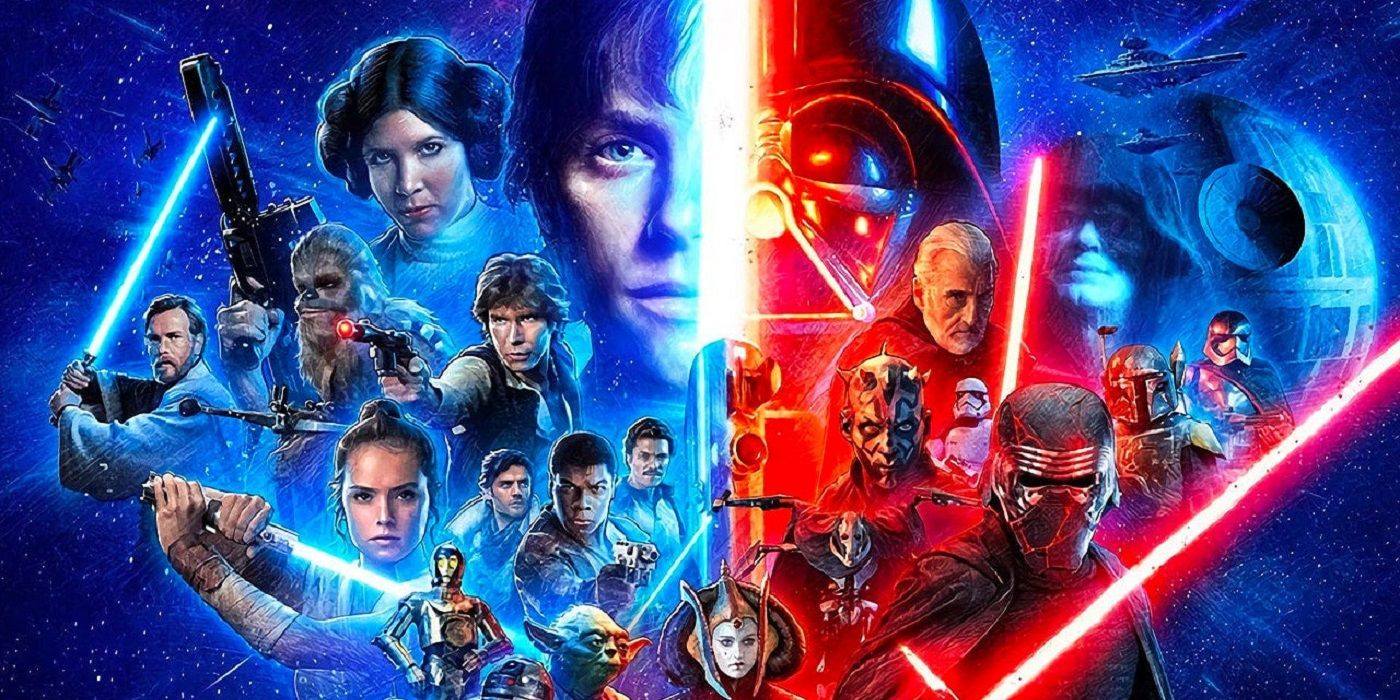
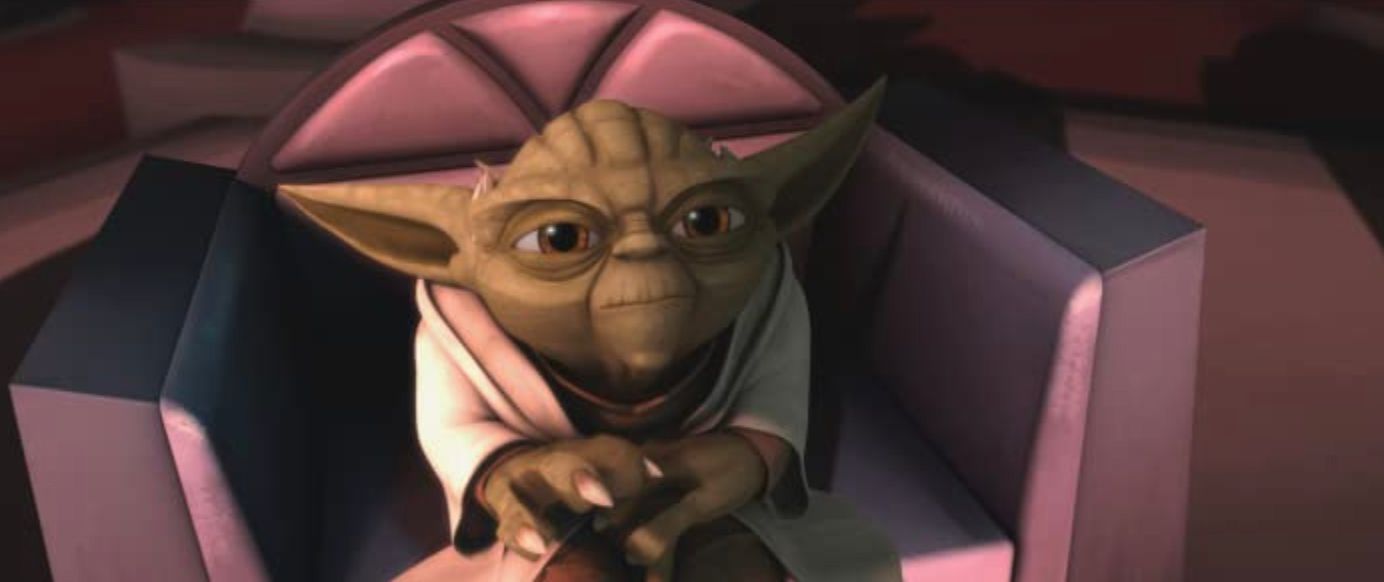
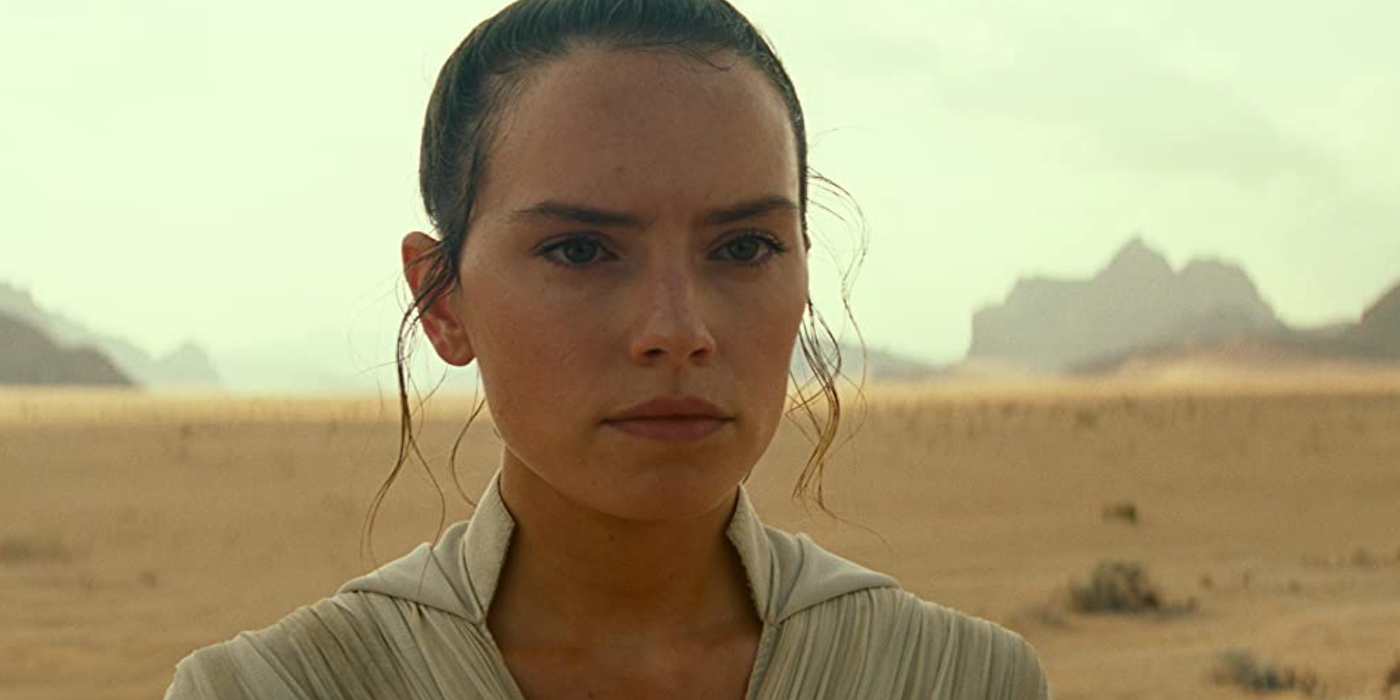
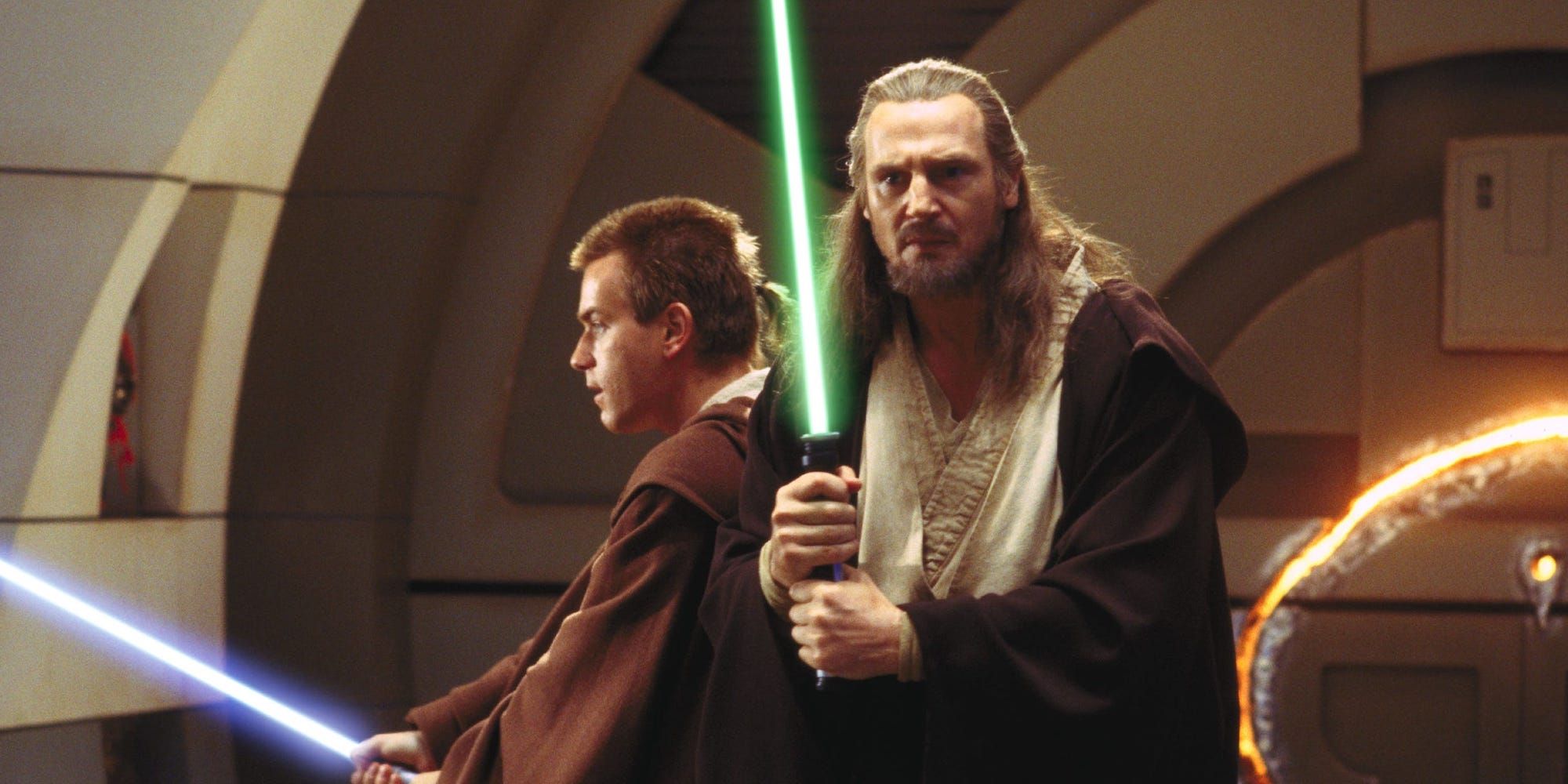
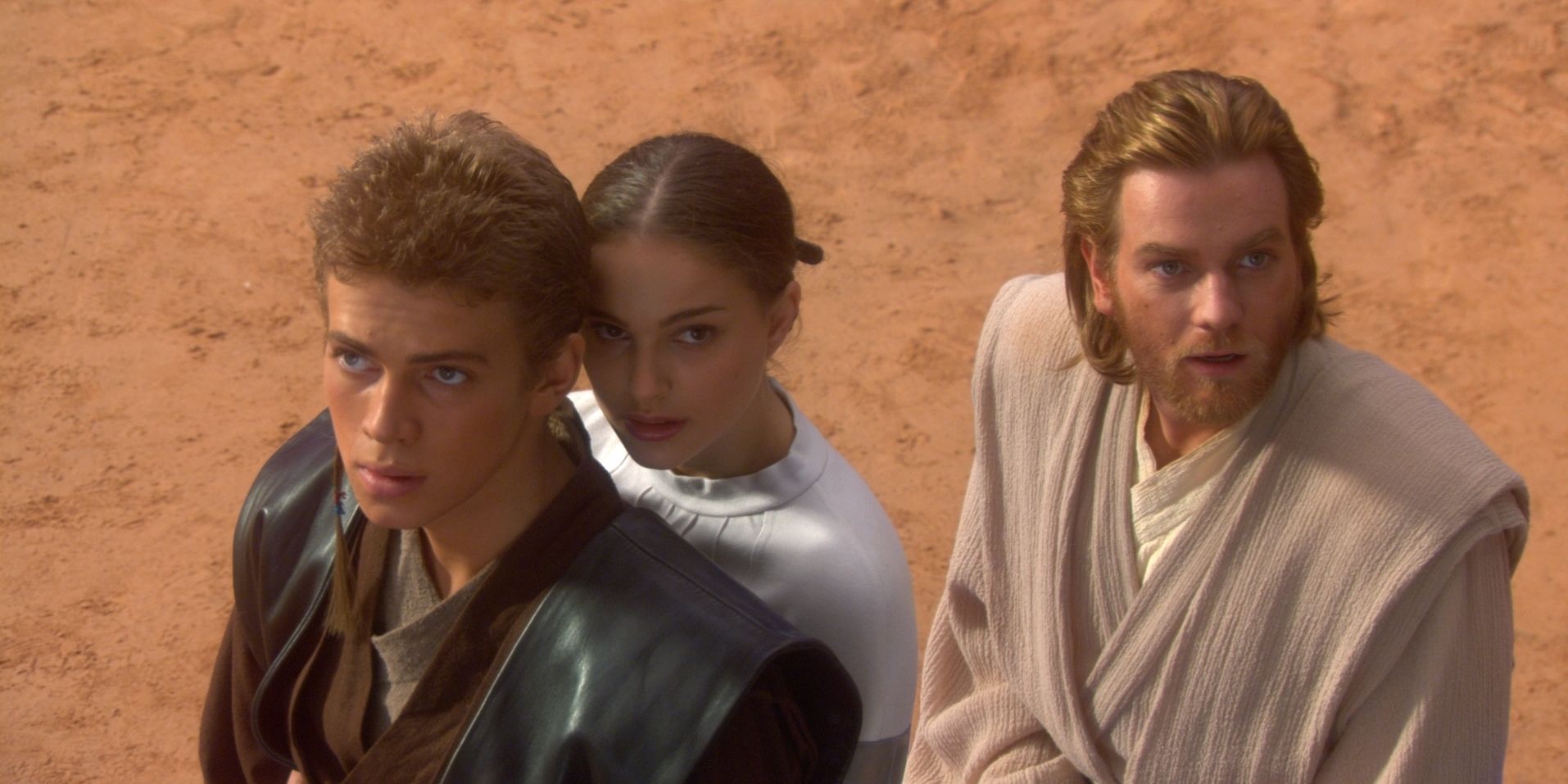
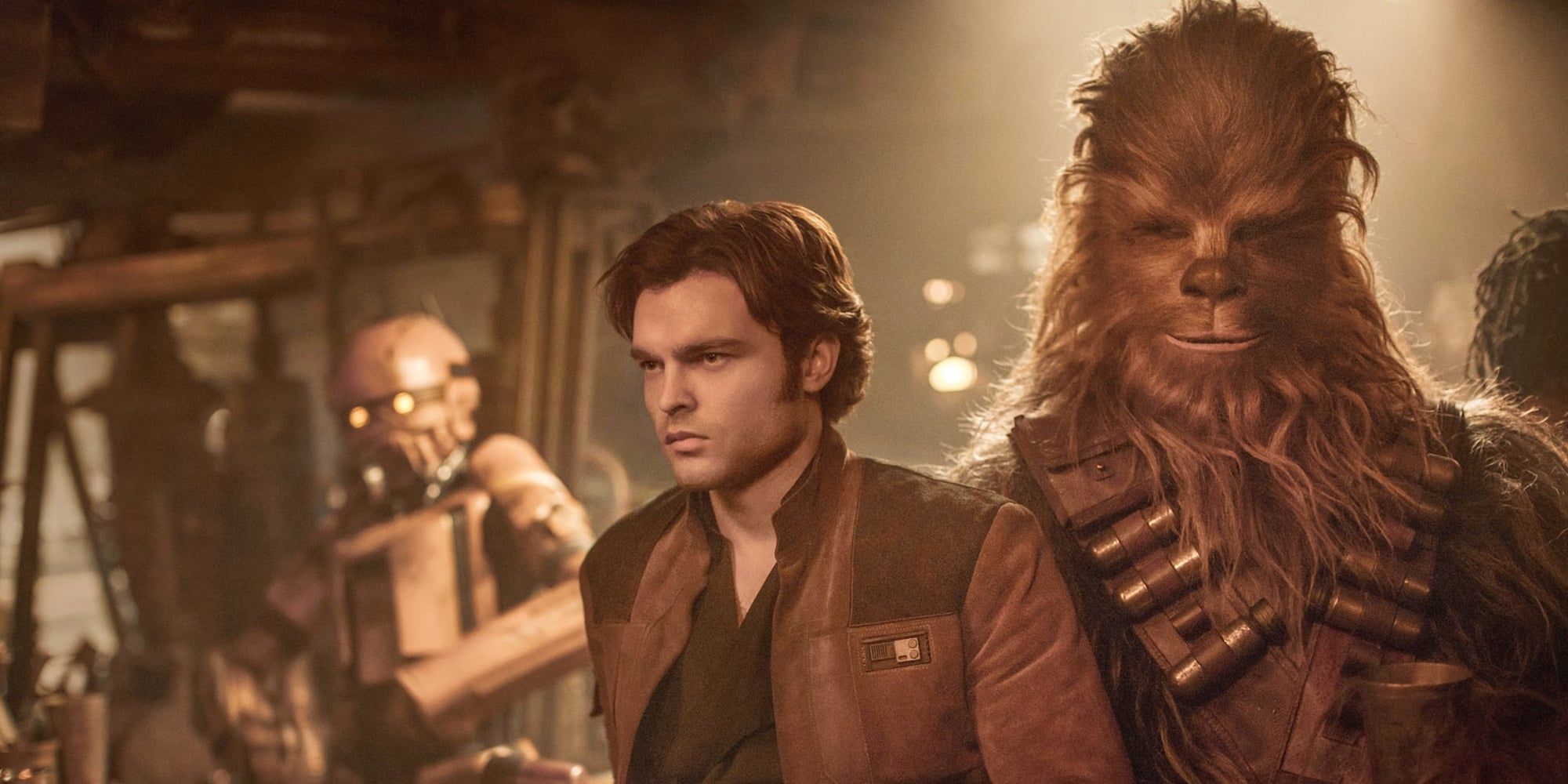
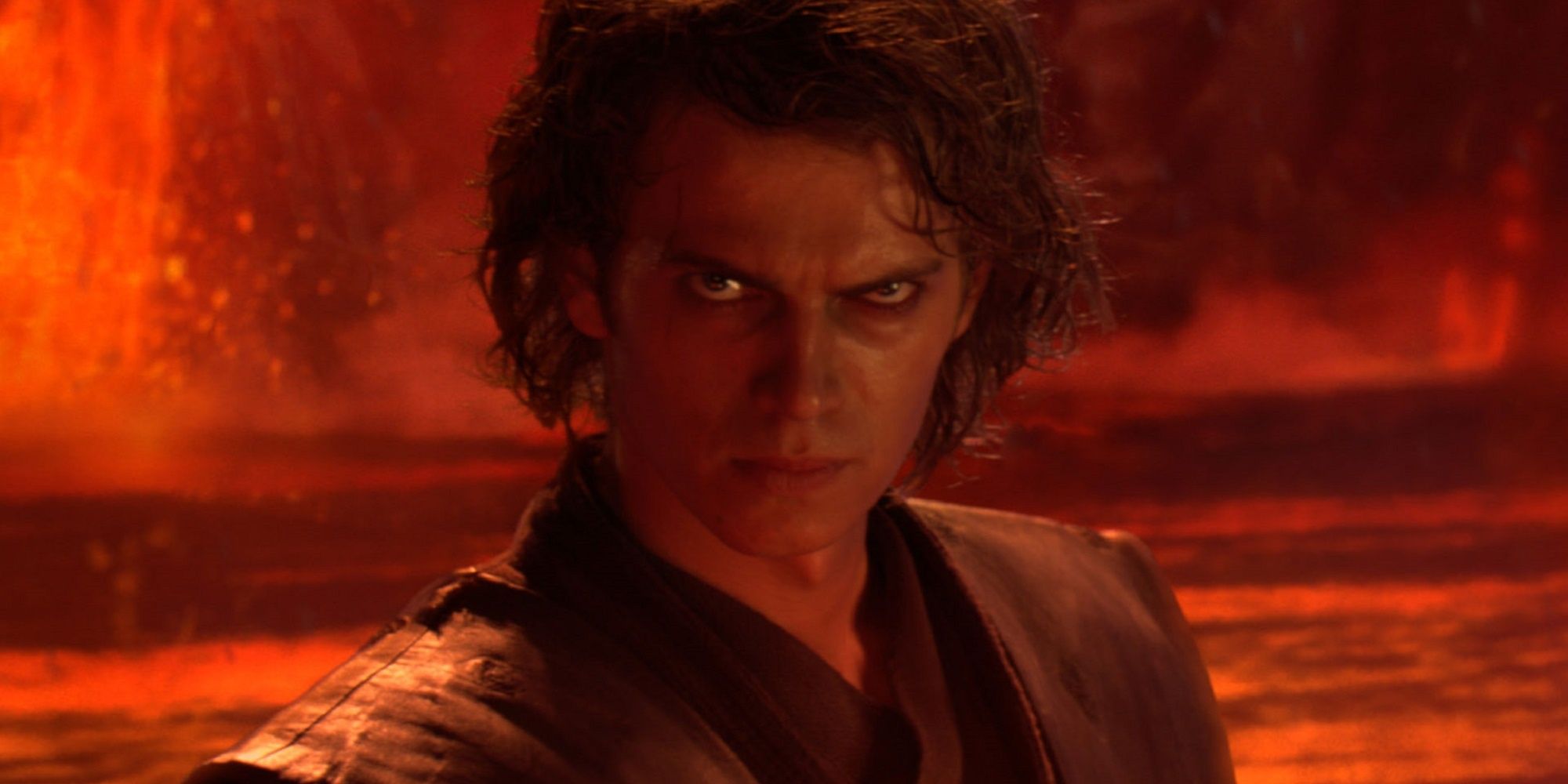
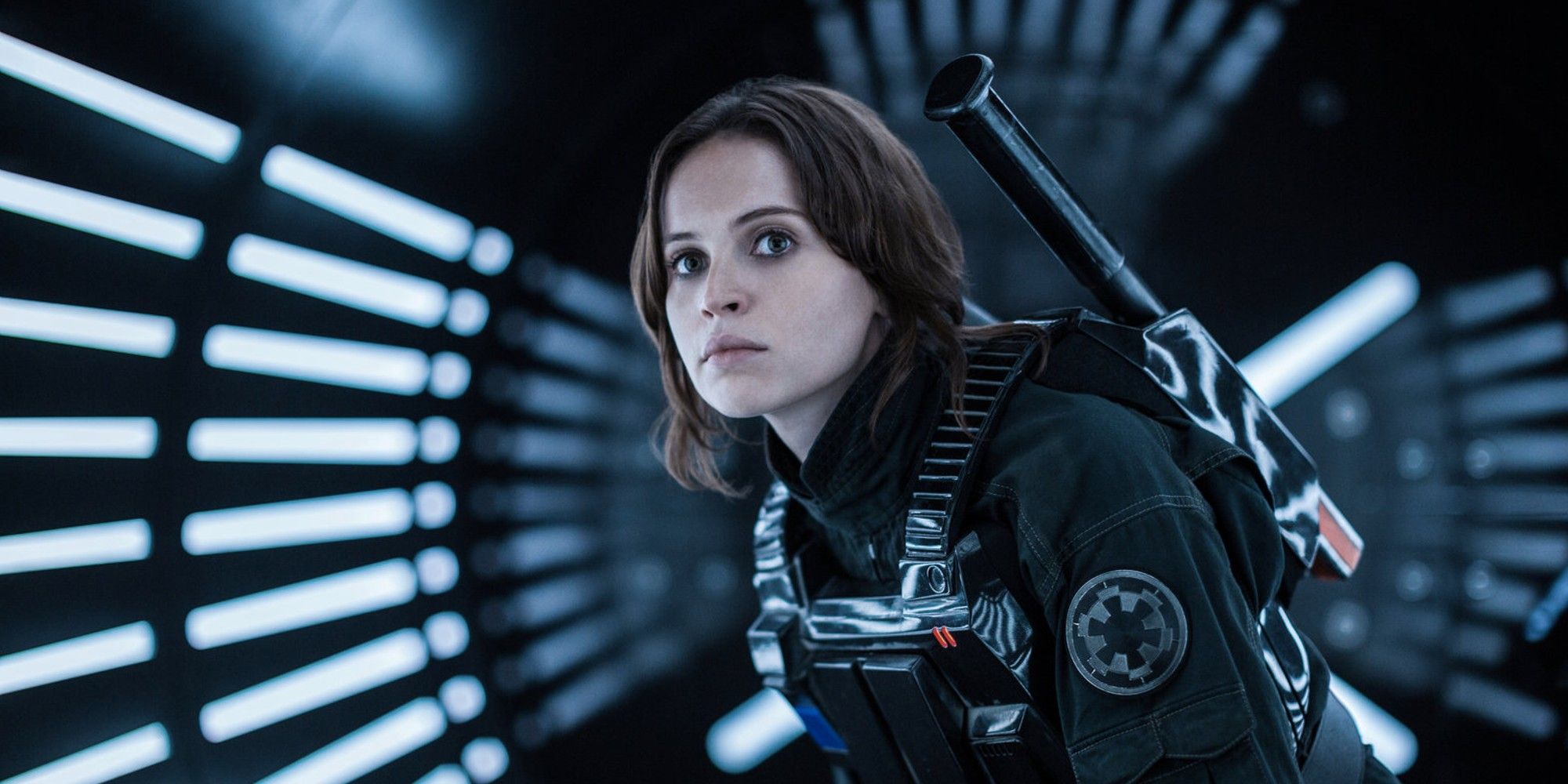
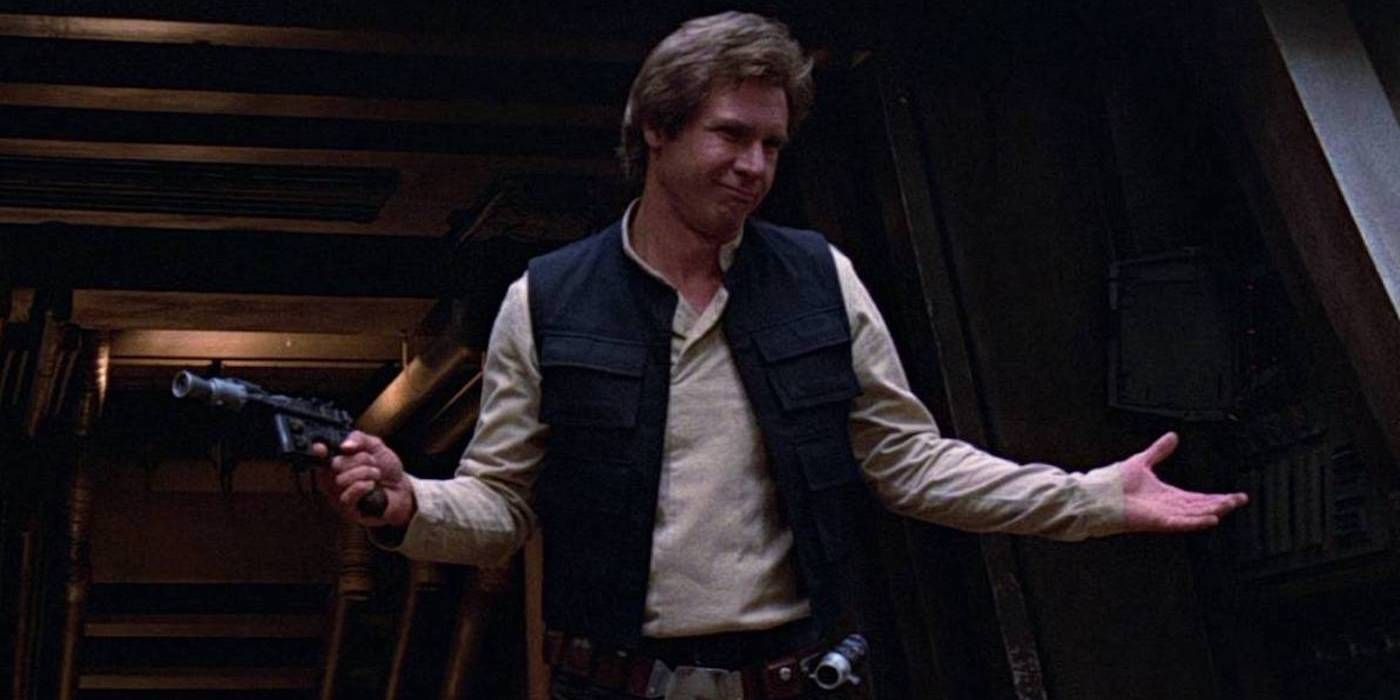
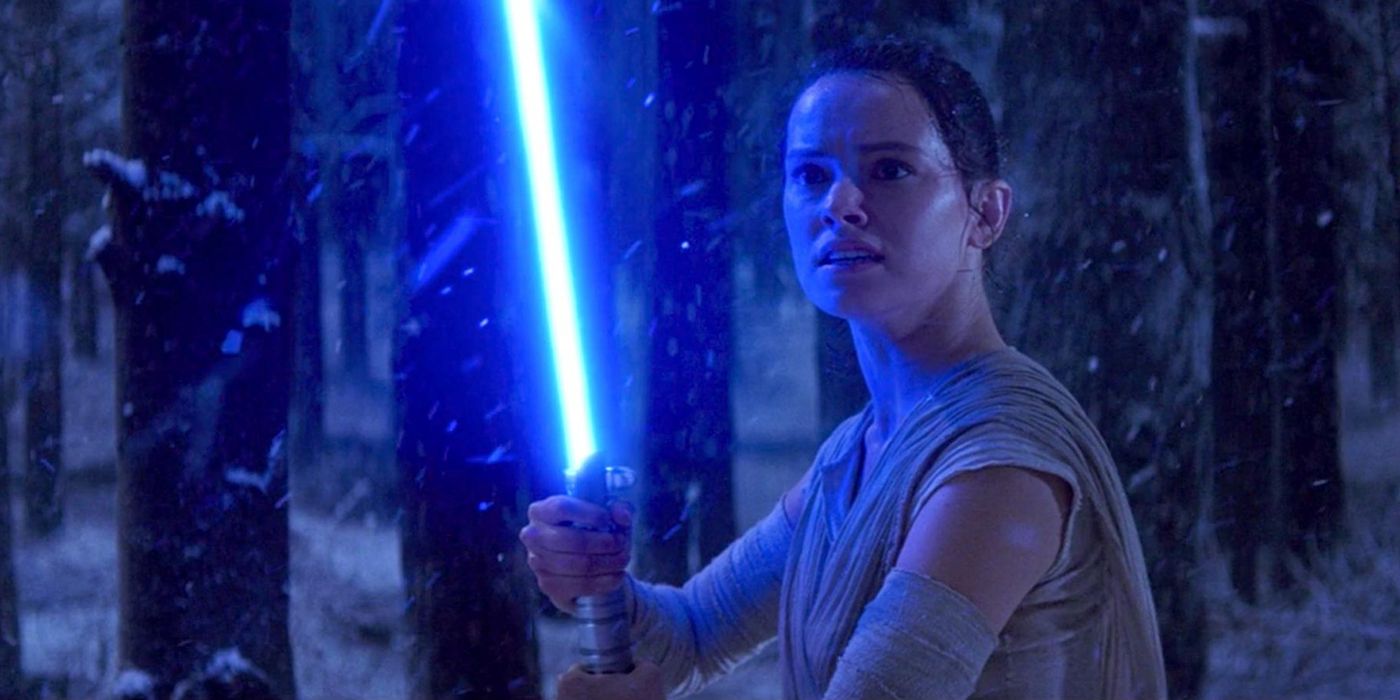
.jpg)
